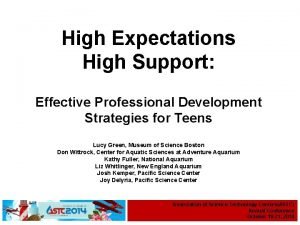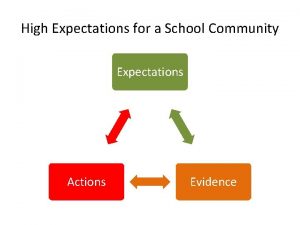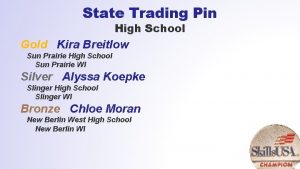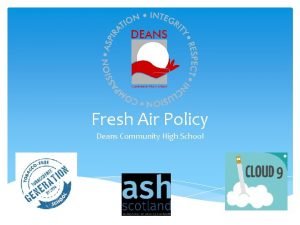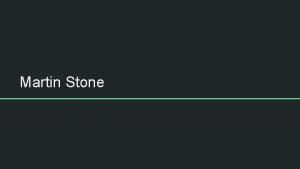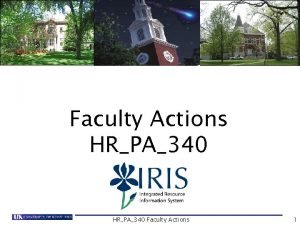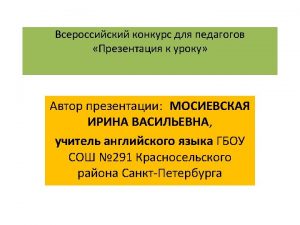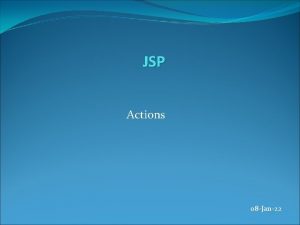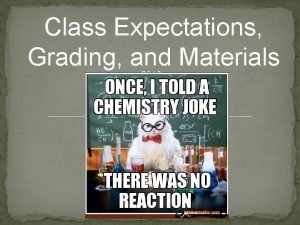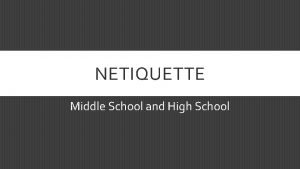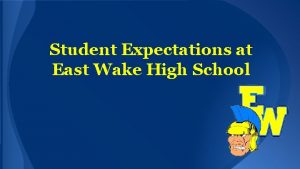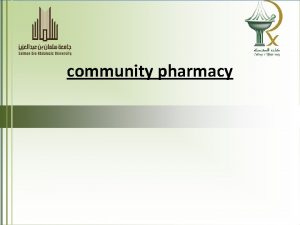High Expectations for a School Community Expectations Actions










- Slides: 10

High Expectations for a School Community Expectations Actions Evidence

Key Questions on Expectations • As a school community, what are our expectations for teaching and learning? • What evidence would we look to in support of that expectation? • What actions do we need to undertake to produce said evidence?

Theory of Action for High Expectations As a community of learners, we expect that_(expectation)_, as evidenced by _(artifact/observable practice)_. We get to _(evidence)_ by doing _(actions/activity)_, then _(actions/activity)_, followed by _(actions/activity)_.

Sample High Expectation As a community of learners, we expect students to take ownership of their own learning, as evidenced by the feedback they receive (from both peers and teachers) during the writing process. We get to this level of feedback by doing working in teams to refine the quality of our rubrics, then aligning our assessments to rubrics and modifying curriculum documents, followed by the delivery of instruction which includes opportunities for students to receive peer feedback.

Considerations / Questions • There might be multiple streams of evidence in support of an expectation. For each of those evidence streams, there should be clear “paths of action” that trace the development of evidence. (reddit) • What do we believe about how students learn best? • What is the link between our school’s expectations and our school’s instructional focus?

ELA Instructional Expectations Daily • • • Aims that require students to ponder author’s purpose and craft. Motivation to engage students and open lesson. Essential questions that drive discussion about how and why authors use literary devices. Opportunities to write and read short but rigorous products and texts, respectively. Engage with at least one Regents question (CCLS only for grades 9 & 10; both Regents for grade 11 and all repeater Regents-prep courses). Several checks for understanding. Use of visual aids to represent abstract ideas and concepts in literature. Exit slips that assess student understanding at the end of a lesson. Multiple access points for ELLs and SWDs such as scaffolded tasks, graphic organizers, sentence stems, templates, and visual aids. Per Unit Per Course • A big idea (theme) with high-level essential questions and enduring understandings. • A substantive writing assignment that is aligned to the CCLS. • Ongoing Regents-based tasks (CCLS Regents for grades 9 and 10; both Regents for grade 11 and any repeater course). • Exposure to multiple genres, including non-fiction articles, short stories, novel excerpts, and reviews. • Multiple opportunities to reflect upon the ways in which authors use literary devices to convey messages about myriad topics. • Opportunities to use the writing process to produce original works. • Evaluate and understand grammar usage in a text. • Learn and authentically use tier 2/academic vocabulary. • Performance Task • Integration of the arts, specifically art that reflects themes and ideas found in the literature of said unit. • • • Extended research project that requires a written report and an oral presentation. Guidelines for class discussion. Opportunity to discuss how the different units within the course connect and build upon each other.

Math Instructional Expectations Daily • • Content-specific academic vocabulary Spiraled content Clear and specific AIM At least one “what if…” or other Ho. T question Time to think/work independently Peer-to-peer or group discussion Frequent checks for understanding Language that communicates belief in students Per Unit • • Exposure to various types of questions (multiple choice, short answer, open ended, error analysis, etc. ) Rich essential questions Opportunities to write Rigorous classroom activities and performance tasks Real world connections Justifications and explanations Use of technology Opportunities for access for all learners Per Course • • • Student or group presentations of work Opportunity to refine and revise work products Use of various mathematical tools Use of rubrics, templates, and graphic organizers Peer assessment and peer tutoring opportunities 8 Standards for Mathematical Practice & Instructional Shifts

Science Instructional Expectations (for Regents-Year courses, treated as year-long experiences) Daily • • • Aim that addresses an appropriate measure of content Motivation to engage students and open lesson 3 -5 diagrams taken directly from previous Regents that are used in developing and processing new information Cooperative learning activity (form a quick turn and talk to an extended inquiry activity that produces a solution to a specific question/problem) At least one previous Regents question that is fully processed/annotated. Questions sets that scaffold from Identify and State to Describe, Explain, and Predict. Student discussion (HOQ) that utilizes the discussion prompts: add, challenge, connect, and summarize. Several checks for understanding that require students to “reprocess information” and create their own questions. Opportunities to read and write with Pre-writing (template) or writing component and/or writing frames Supports for academic vocabulary Spiraled content from previous lessons and/or units with multiple entry points Per Unit Per Course • Several writing samples that require students to describe and explain in detail in which they cite specific content and/or evidence. • Process as much information as possible through the reading and creation of graphs, tables, and diagrams. • Developing specific science process skills such as measuring, communicating, predicting, interpreting data, and formulating models. • Conduct laboratory experiences and write up appropriate laboratory reports that demonstrate the understanding and abilities of a specific skill or express the relationship between two variables • Express the content of the unit in terms of theme, relationships, a visual, connection to prior content, and potential assessment questions. • Categorize the content of the unit from the big ideas to the specific content with specific representational examples. • Design an experiment and/or research that explores a variable(s) related to the unit. • Performance Task • Real-world connections and applications of content • • • Understanding application of the Scientific method, inquiry, and application of content to real-world problems and issues. Communicate their ideas in a written format that argues a position by presenting research and data to support their position. Utilize the skills and protocols of research to share ideas and critique the ideas of others through various media formats. Developed skill set that reflects Basic and Integrated Science Process Skills that allows them to effectively ask and answer their own questions. A success model that includes specific structures for activities such as taking notes, collecting and organizing information, reasoning, and analyzing a situation and/or data. Extended research project that requires a written report, an oral presentation, and a project display board – self- and peer-evaluated with a Rubric

Social Studies Instructional Expectations (for Regents-Year courses, treated as year-long experiences) Daily Per Unit Per Course • Appropriate pacing • At least one rigorous (Do. K 3+) question • Peer-to-peer discussion of a Ho. T question • MC questions • Language that communicates belief in students • Exposure to every • Research paper type of DBQ short • Presentation -answer: • Guidelines for – Passage classroom – Map discussion – Political Cartoon – Chart/Graph • Structure for • At least one CCLStaking notes aligned Thematic/DBQ Essay

Key QR Indicators 1. 1 1. 2 2. 2 3. 4 4. 2
